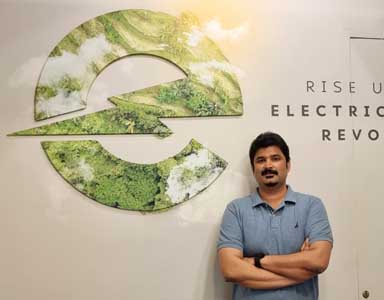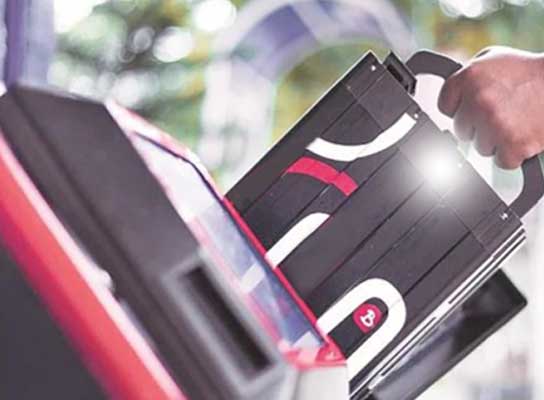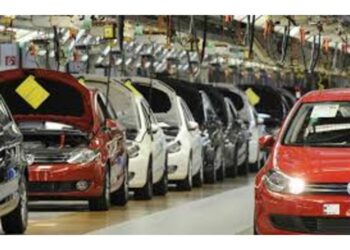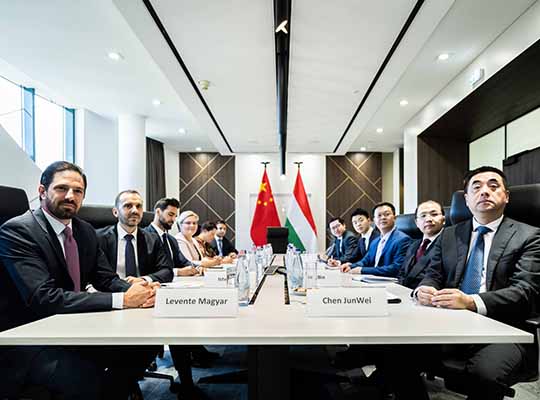This year’s budget was very important for the EV Industry as our government introduced a battery swapping policy and created higher standards for the growth of India’s electric vehicle (EV) ecosystem. The battery swapping policy and interoperability standards for electric vehicles (EVs) announced by the government in the Budget aim to address one of the biggest deterrents for EVs which is the charging infrastructure. It helps to reduce upfront costs, the downtime and leads to faster adoption of EVs in the Indian market. Swapping as a technology solution for EVs has received recognition from policymakers and Industry stakeholders. It will need to take into consideration the accountability regarding the safety of EVs, customer experience and the business interest of EV manufacturers.
Battery swapping Infrastructure will allow EV owners to replace the discharged batteries with charged ones at different swapping stations. This will solve the problem of setting up charging stations and also helps to reduce drivers’ anxiety over the range their EVs can cover. Battery leasing under the battery swapping infrastructure will help EV owners to save on the cost of purchasing a battery. This is less time-consuming and will take only a few minutes compared to charging at a battery station and also requires small infrastructure.
Superior battery swapping infrastructure also helps to reduce the upfront cost of the vehicle for the consumer which is the price of the vehicle is halved. The risk of technology obsolescence is eliminated, and safety is ensured. With this, users have a wider portfolio of models to pick from that suit their style and needs.
With this, comes a subscription-based model that provides flexibility to the consumer to choose the best technology being offered at the best price, similar to the telecom services where a user chooses a service provider in terms of connectivity and can shift as per the quality of service provided. It is a time-saving infrastructure that will reduce the time to charge the vehicle. The superior battery swapping infrastructure also enables access to finance with the shared responsibility of assets amongst the users, battery service providers, and Original Equipment Manufacturers.
Today this EV industry is almost non-existent and fragmented. In the Indian market, the behaviour of consumers and conditions are different in behavioural terms such as driving as well as operational terms. This is the result that it is not successful unless local testing is extensively done, and learning is developed accordingly to this infrastructure.
With the scenario of the battery-swapping market, EV manufacturers and stakeholders should facilitate the phased development of a swapping ecosystem and its infrastructure that is linked to the EV market’s stage of maturity. The battery policy should take a targeted approach, always identify priority vehicle segments and enable the rapid adoption of swapping solutions of EV batteries in those segments where battery swapping has the most valuable role to play. The Battery swapping policy should find a balance between standardization and encouraging innovation in the swapping infrastructure. This should also provide equitable growth opportunities for various technologies, solutions and business models. The policy must offer flexibility to various stakeholders such as manufacturers, industry players and state governments, to devise battery-swapping ecosystem development strategies that are best suited to meet the needs of this sector.
The approach to standardization should always entail the identification of aspects that can and cannot be standardized. The standardization has the potential to shift battery swapping from an existing business-to-business (B2B) endeavour to a business-to-consumer (B2C) experience. This also leads to easy use and access and also to multiple options for an EV user. The standardization of EVs is a long process that requires a consensus among several batteries and vehicle manufacturers.
The superior battery swapping infrastructure will not only boost the confidence of normal users to move faster and adopt EVs but it will also address range anxiety. It will also help to strengthen the EV ecosystem in the country and bring a standardisation process for EV batteries. Our government is also addressing key points around how customers can access subsidies that are currently available for EVs, range per charge criteria and GST for swapping services in line with EVs. The government is also taking several encouraging steps on interoperability standards.
Superior battery swapping infrastructure, it’s charging and its battery-swapping stations can be located separately. The battery swapping policy should always encourage states to form several rules for the safe transportation of batteries and provide guidelines. The draft policy will also help to set up a single window clearance system that will include the issuance of trade licenses. The battery swapping infrastructure should provide clarity on the status of battery swapping as a delicensed activity. If any situation, when a trade license is required, the policy should identify the issuing authority and process it.
The superior battery swapping infrastructure is a significant contributor to GoI’s COP 26 targets, such as decarbonisation of the power sector i.e., utilising ToD and renewable energy for charging batteries at different swapping stations. It also helps to reduce the dependence of the country on the import of oil and battery raw materials. This will also help to reduce the dependence of India on oil import, and the import of battery raw materials. Today, the financing options for electric vehicles are easy to build such as the ownership of the electric vehicle is to be financed at 50% of the cost (without battery), minimum technology risk, and negligible maintenance, as compared to ICEs (Internal Combustion Engine). Batteries of the electric vehicles are taken care of by reputed and better-funded OEMs and CPOs. With the evolution, the battery swapping with mini modules (2-4 battery swap packs) will be available at different stores.

In a country like India, battery swapping infrastructure can help to evolve as a fit use case for two- and three-wheelers, which comprise more than 80% of total vehicles. An enabling and powerful battery-swapping infrastructure is very critical to accelerating India’s e-mobility transition. The battery swapping policy should be mindful of the nascency of the battery-swapping ecosystem in India and also avoid constraining various aspects of the swapping value chain. The major benefits of battery swapping infrastructure can only be achieved when the industry leaders support the transition of this sector reasonably and help to establish an ecosystem and infrastructure that focuses on the needs of the consumers, safety and convenience.













